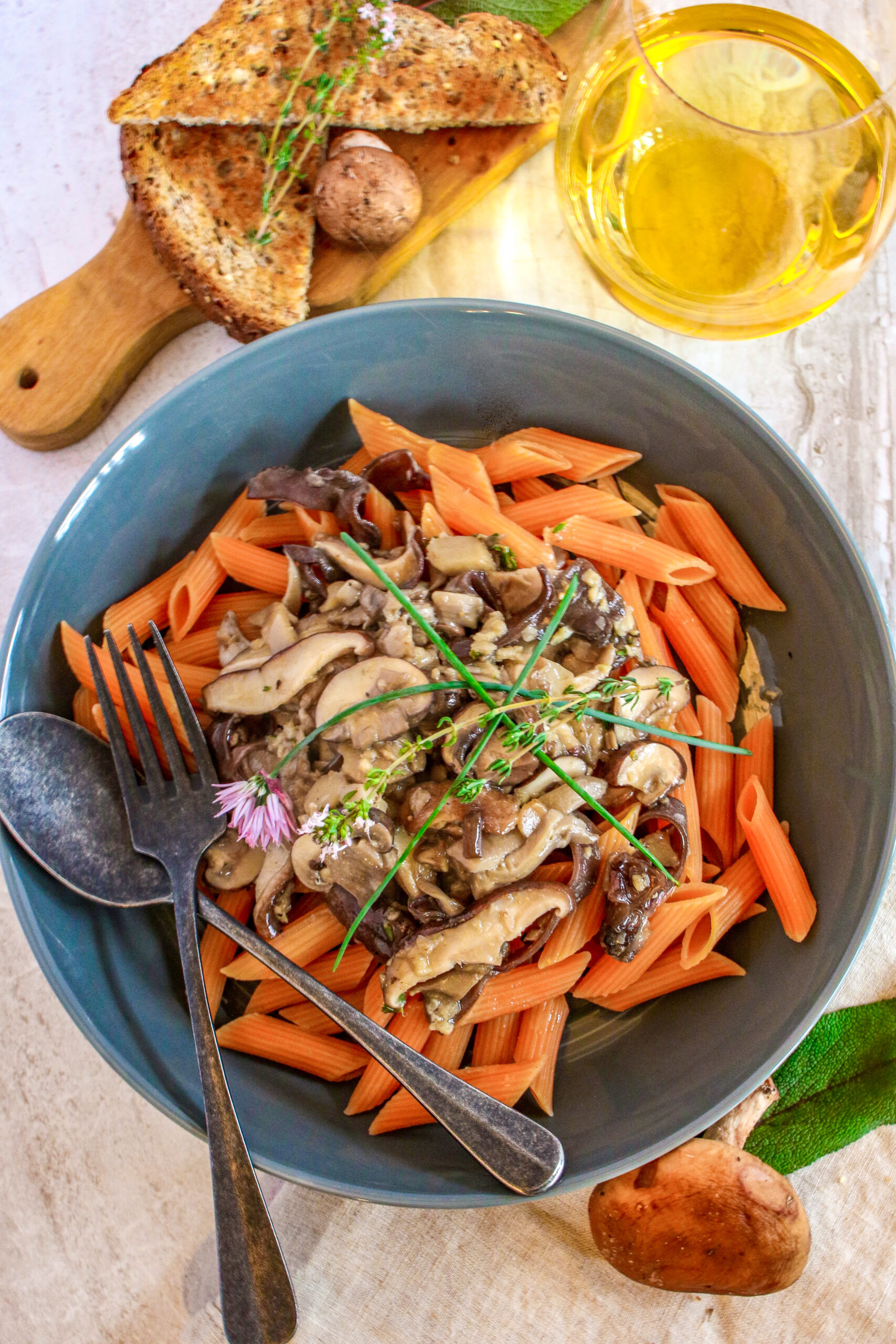
Don’t fear pasta! This traditional food ingredient can be a nutritious part of your day, with these 7 tips for enjoying healthy pasta.
Ahh pasta…that classic Italian staple is so comforting and delicious, right? But, is pasta healthy? How can you enjoy this comfort food the healthy way? First of all, let’s set the record straight about pasta. Though carb-rich pasta has gotten a bad rap because of carb fear and carb shaming, we are coming full circle in our healthy appreciation for this delicious traditional food. After all, pasta is a simple food made out of only two ingredients (usually)—wheat flour and water. You can easily make vegan pasta yourself at home, in fact.
Pasta is part of the Mediterranean diet, which is linked with lots of health benefits, and it’s also a key part of plant-based food traditions that promote longer life, lower disease risk, and healthy weight. In fact, research shows that people who eat pasta typically include more vegetables in their diets, because pasta serves as a “carrier” for more veggies at meals—pasta is like a blank canvas for adding nutrient-rich ingredients—spices, herbs, tomatoes, zucchini, eggplant, and more—into your meals. In addition, there are so many types of pasta available today—gluten-free pasta, chickpea pasta, veggie pasta, and more! And pasta is good in so many ways, from classic entrees like spaghetti, lasagna, and macaroni and cheese to salads, soups, and casseroles. Don’t forget: pasta is shelf-stable and budget-friendly, too. So, learn how to truly embrace pasta with these 7 Tips for Enjoying Healthy Pasta.
7 Tips for Enjoying Healthy Pasta

1. Whole Grains Pasta Bonanza
You can find whole grain pasta varieties that serve as a good source of fiber-rich whole grains, which have been linked with a landslide of health benefits, including helping you to live a longer, healthier life. Shoot for at least three servings of whole grains every day.

2. Study the Food Label
A wide range of whole grain pastas are available in supermarkets, but looks can be deceiving. Some products may be labeled “multigrain,” “whole grain,” or “healthy carb,” but that doesn’t mean they are made of 100% whole grain. If you’re looking for whole grain pasta, search for those that list whole grains first on the ingredients list.

3. Remember, Whole Grains Add Up
It’s ok if your pasta isn’t whole grain. Pastas are often made with a combination of whole and refined grains; if a product contains 51 percent of the total weight (or eight total grams of whole grains) of a whole grain, it counts as a half-serving. These pastas can still be a substantial source of healthy whole grains in your diet.

4. Look for Alternative Grains and Pulses
Many of today’s pastas are made with alternative grains, including brown rice, quinoa, spelt, Kamut, corn, barley, rye, and millet; as well as pulses, like lentils, chickpeas, and beans, making them the perfect solution if you must avoid the gluten in wheat because of conditions like celiac disease or gluten sensitivity. In fact, pulse pasta can be richer in fiber and protein than traditional pastas. These pasta varieties offer a delicious nutritious option for the whole family.

5. Low-Glycemic Bonus
Pasta—even when made from refined white flour—has the privilege of being a low-glycemic index food. Because of the way pasta is produced, the starches get trapped in the wheat protein matrix and become less rapidly absorbed into your blood stream. This low-glycemic response can give you the advantage of feeling more satisfied for a longer period.

6. Mindful Pasta Portions
The biggest challenge in dishing up a healthy pasta meal is sheer portion size we’ve gotten accustomed to. Most people pile up triple or even quadruple the recommended serving size (common at restaurants), which is one ounce of dried pasta or one-half cup cooked. Depending on your nutrition needs, it’s ok to enjoy two serving of pasta as part of your mindful portion approach. Go heavy on the veg-rich toppings to balance your plate.

7. Load up the Veggies
What’s the real secret for tuning your pasta meal into a nutritious winner? Pile on the health-protective veggies by stirring in tomato sauce, herbs, garlic, sautéed veggies such as onions, mushrooms, bell peppers, and zucchini; or green leafies like kale, spinach, arugula and chard. Buon appetito!
Check out some of my favorite healthy pasta recipes here:
Vegan Pasta Amatriciana
Fresh Cranberry Beans with Pasta and Greens
Vegan Baked Mediterranean Lasagna
Swiss Chard Pecan Lasagna
Lemony Garden Peas with Pasta
